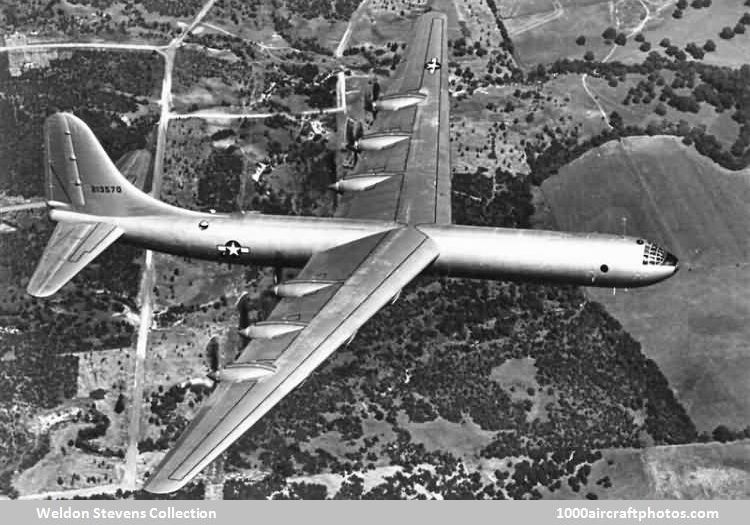09/30/2007. Remarks by Weldon Stevens, with data supplied by Jack McKillop: "The USAAC requirement for was issued on 11 April, 1941, Consolidated submitted a proposal in October 1941 that was awarded with Contract AC 22352 for two XB-36 prototypes, s/n 42-13570 and 42-13571, on November 15, 1941. (the second aircraft eventually being completed as the YB-36).
Due to the low priority in the latter part of WW II, progress was slow. The XB-36-CF made her first, 38-minute, flight from Fort Worth Army Air Field, Fort Worth, Texas, on August 8, 1946, with company test pilots Beryl Ericsson and Gus Green at the controls.
Because of the long-range and limited airports/service, the design allowed engine repair while in flight. To give you an idea as to the size of the wing: I am 5 ft 8 in (1.73 m) tall, and could walk out to the second (middle) engine standing erect. I had to stoop at the 3rd (outboard) engine.
The initial single wheel landing gear had some severe problems and almost caused the plane to crash and the cancellation of the production. On March 26, 1947, while raising the landing gear, the retracting hydraulic strut of the right main landing gear exploded. Test pilot Erickson saved the plane with a spectular landing. After 89-hours of flight tests it was fitted with a four-wheel bogie main landing gear, replacing the original single 9 ft 2 in (2.79 m) high wheel, reducing the runway thickness requirement to 13.5 in (34.3 cm). Re-flown in June 1948, it was tested with a track-type landing gear at Wright-Patterson AFB, Dayton, Ohio, in 1950.
During the testing stage, an engine caught fire in-flight. Even though the effort was put forth to extinguish the fire, but it continued to burn. Because of the location of the engines on the rear of the wing, the airflow directed the fire away from the wing. The fire continued to burn slowly. When it reached the wing, the engine and cowling fell off the wing. Ironically, the engine fell through the roof of the high school gym in the community of Drop (Uninc Denton County), located 30 mls (48 km) north of Forth Worth.
This was a front page story in the Star-Telegram and FW Press. One thing that the report called attention was the location of the engines, air flow, slow burn, and falling off the plane. Up until that time they did not know what a fire would do. There was a great concern about all the fuel in the wing. Did you ever notice the wing tip location when the plane was empty and where it was when the tanks were full with a fuel load of 20,000+ gal (75,700 l)?
In 1957, it was turned over to the Fort Worth Fire Department for training personnel."
